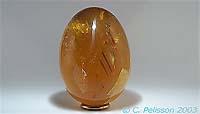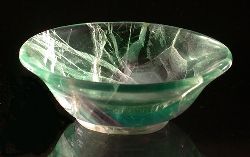| | FLUORITE,
RAW MATERIAL FOR THE DECORATION AND ART OBJECTS. 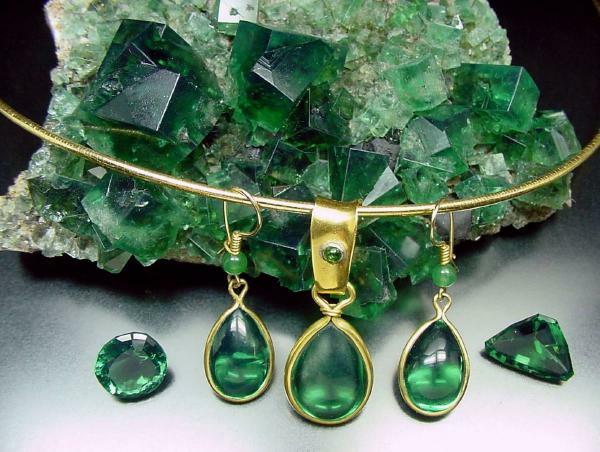
Earrings
and pendant realized in crystals of fluorite
from the mine of Rogerley (Frosterley,
Durham, England).
Photograph
Jesse Fischer©2003
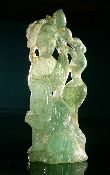
Statuette
in green fluorite. China - end XIXth century - 24,5 X 10 X 5 cm
private
coll . | The
chart of this mineral indicates a hardness of 4 (on the Mohs scale of hardness),
what means that be fragile mineral. Moreover, it is sensitive to heat and can
be cleaved very easily as soon as the temperature increases (It is easy to cause
a decrepitation in a traditional furnace).
Another "negative" point for this
superb mineral, which fascinated the man since Antiquity, is that it is faded
easily with the light. It is not rare to find superb crystallizations which were
of a major blue (Beix, Puy St-Gulmier...) completely dull, to see white.
It
is undoubtedly for that that it is not very common to find objects worked among
all the collections of art objects. | |
|
In England, at
the end of the XVIII century, Derbyshire delivered a very veined fluorite: the
variety "Blue John". Imposing objects were carried out, such of the vases, posts,
piedestals... but also of the more modest objects in the face like pearls, eggs...
This industry continued during the XIX century, and was even prosperous. Later,
size and treatment of the fluorite were refined in order to obtain objects with
a lower thickness and more luminous. |
In
France, the second Empire saw the fluorite entering decorative art. Bases, and
other objects of small size were produced. Exceptionellement, of the larger objects
were made: one saw nevertheless a chimney (exposure of 1867)...
The most famous
realization is still visible today. It consists on the realization of the balusters
of the balconies (with the top of the large staircase) of the Garnier Opera. This
fluorite comes from the mine of Voltennes, in Morvan (ore deposit considered as
exhausted in 1986). | |
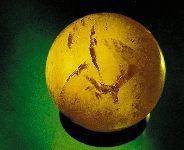
| Rare
(very rare) are the people able to carry out perfect spheres in the pure fluorite,
or the veined quartz fluorite (hardnesses being different). Those are, for major
the part of them, in France. | Cross
in green fluorite and violet
China - end of the XXth century
9 X 6 X 5
cm
private coll. | In
addition, it should be noted that this mineral can give very beautiful parts when
it is cut for the gemmology. Because of its insufficient hardness, it is not possible
to carry out jewels which one can carry. One of the solutions would be to cover
it with a fine diamond dust film in order to constitute a protective coating.
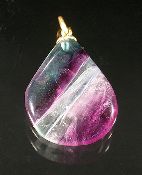
| In
the East and the Far East, the artistic work of the fluorite was always omnipresent.
The Chinese work this matter for a long time. It is sometimes possible to see
figurines in fluorite. These last ones are finely worked when they were carried
out at the XIX century, and the beginning of XX century. On the other hand, the
last achievements are coarser... In
Germany, the town of Idar-Oberstein, capital of the size of the stones (invaluable
and fine) offers to its visitors a nice mineralogical museum. You can see there
cuts with an approximately 20 cm diameter, carried out in Chinese fluorite, whose
edges are covered with pyrite. | | Pendentive
in fluorite
Chinese work - 1999
3,5 X 2,5 cm | |
|
In the United
States, the Zunis Indians continue the tradition of the fetishes and cut in the
fluorite, of the small figurines of animals. Mexico
(area of Muzquiz) provides objects of greater surface (plates, tables...) in purple
fluorite.
|
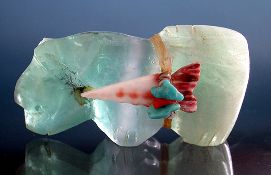
| | |
Lion
Zuni Figurine
Work of the Indians of America (Zuni tribe)
6 X 3
X 1,5 cm
|
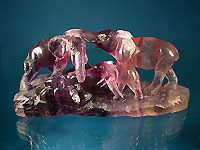 Elephants
Chinese work completed in a Chinese fluorite.
20 X 7 X 10 cm - private
coll . | The
decouratives objects in fluorite have remakes their appearance in rather great
number since lately. Sometimes, it acts of a coarse work, but it is possible to
find works finely carried out. | | | |
Bibliographical
orientation:
Chermette A. (1986) - Fluorite. G Lachurie Ed. 
| |
| |
| Description:
An attractive Persian green fluorite faceted bead.
Intact.
Origin: Circa
4th-6th century A.D. Greater Persia
Dimensions: 14 x 14 x 11 mm |
|
Description:
A beautiful green fluorite bead in the form of an animal, possibly a piglet.
Intact.
Ex Francois Villaret collection, Thailand.
Origin: Circa mid 1st
millennium A.D. Laos
Dimensions: 21 x 12 mm | |
|
|
Vase
en Fluorite
Chine
Diametre: 11 cm
Hauteur : 28 cm
(vendu aux
alentours de 800 euros)
©fantasticstone.com |
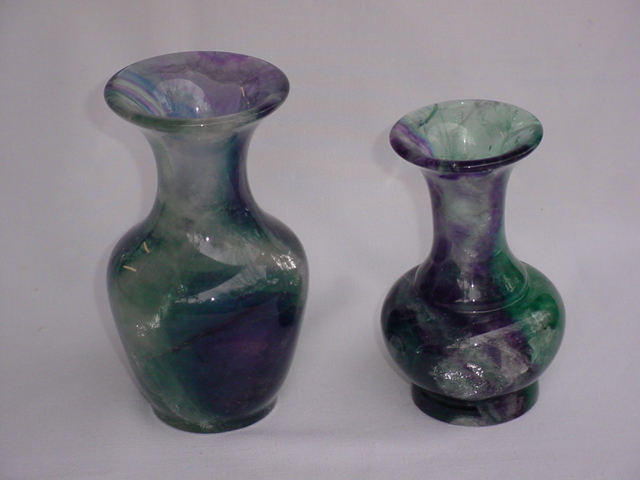

|

![]()
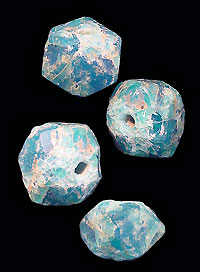
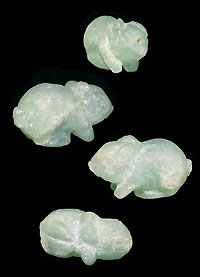
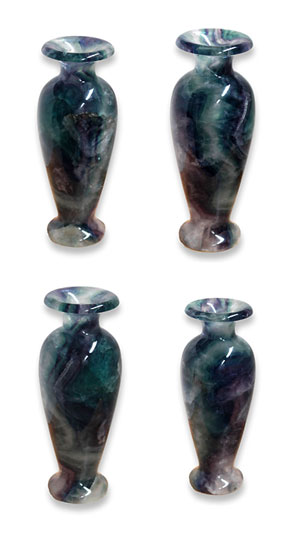
![]()

